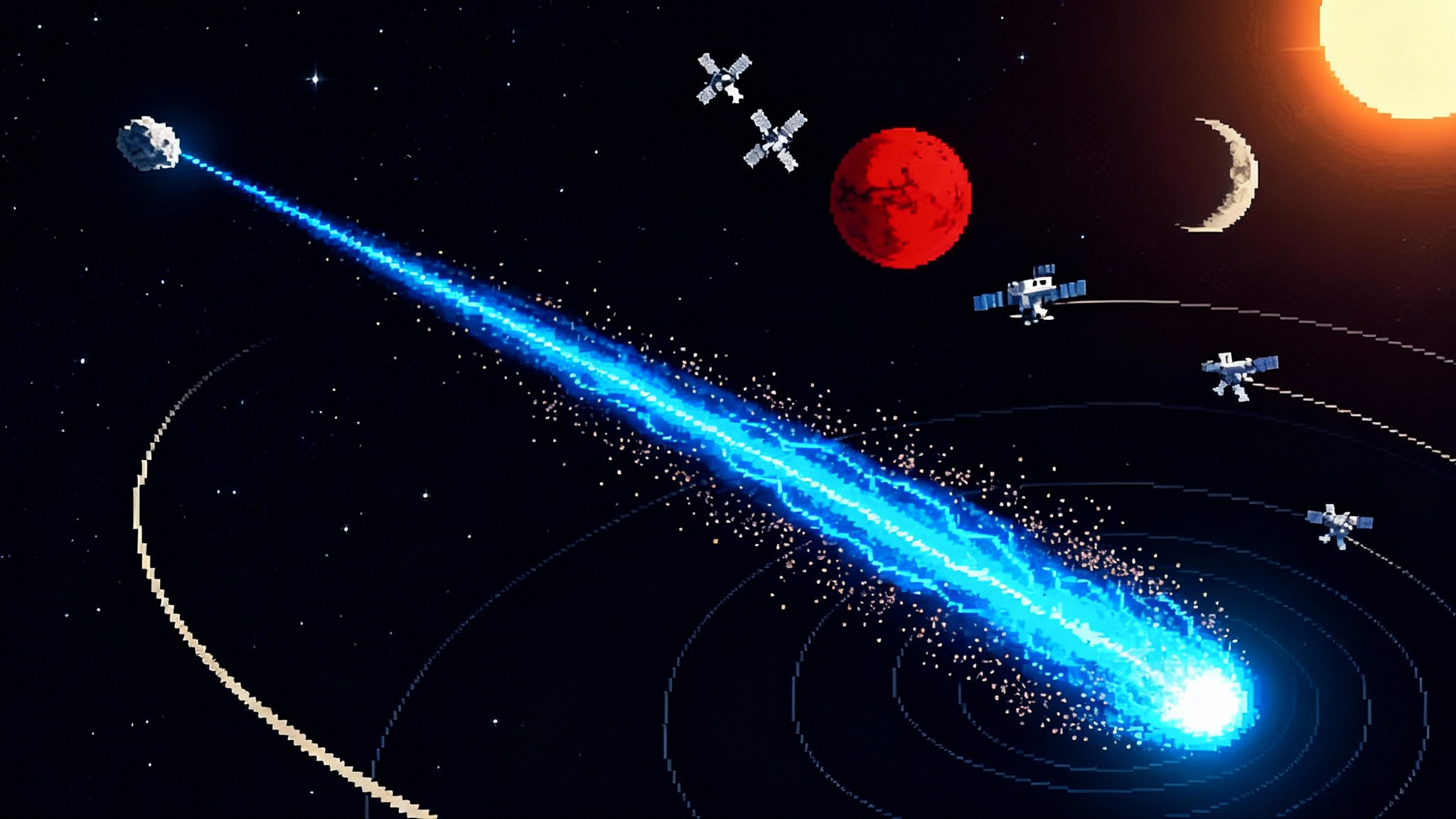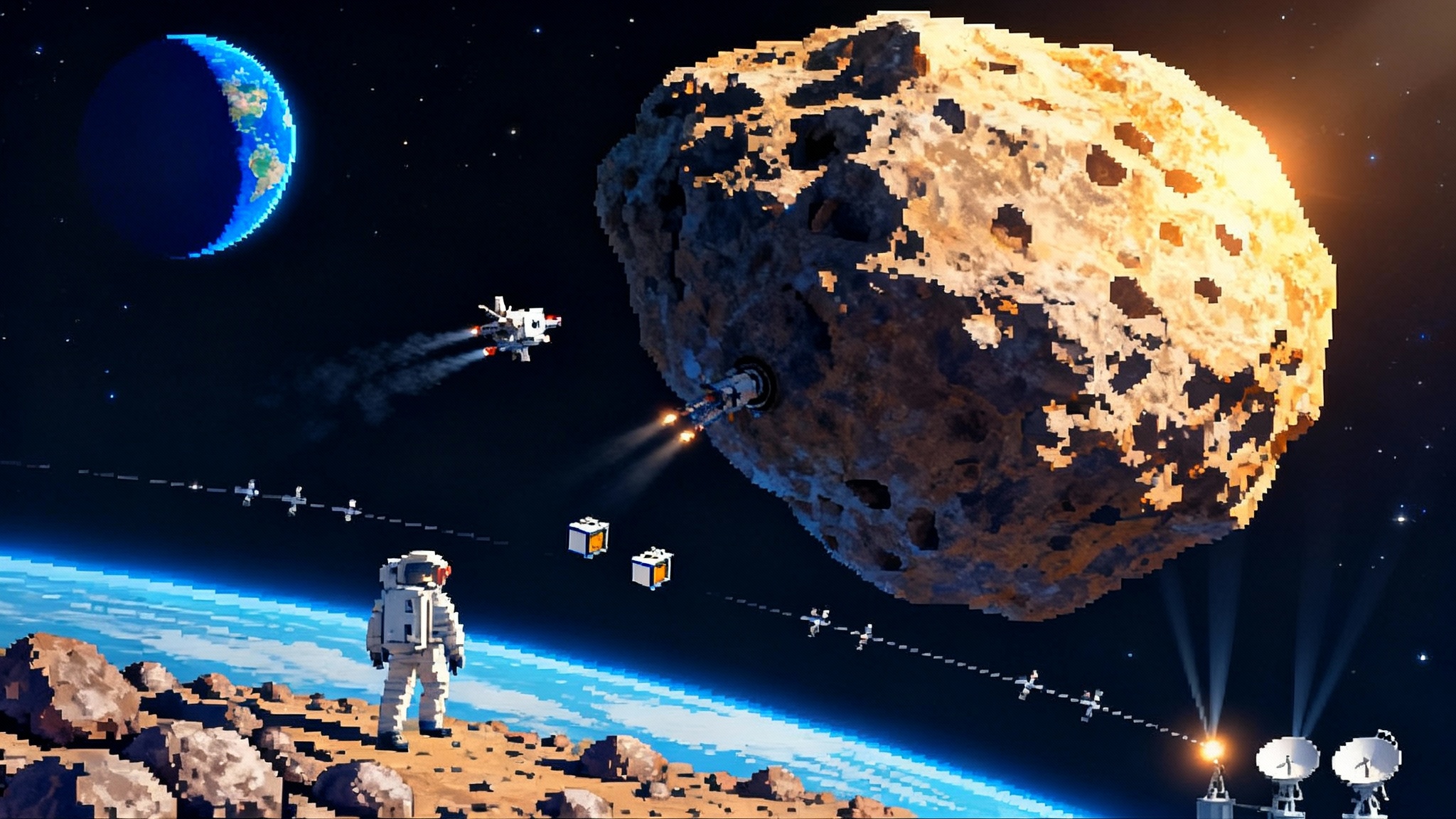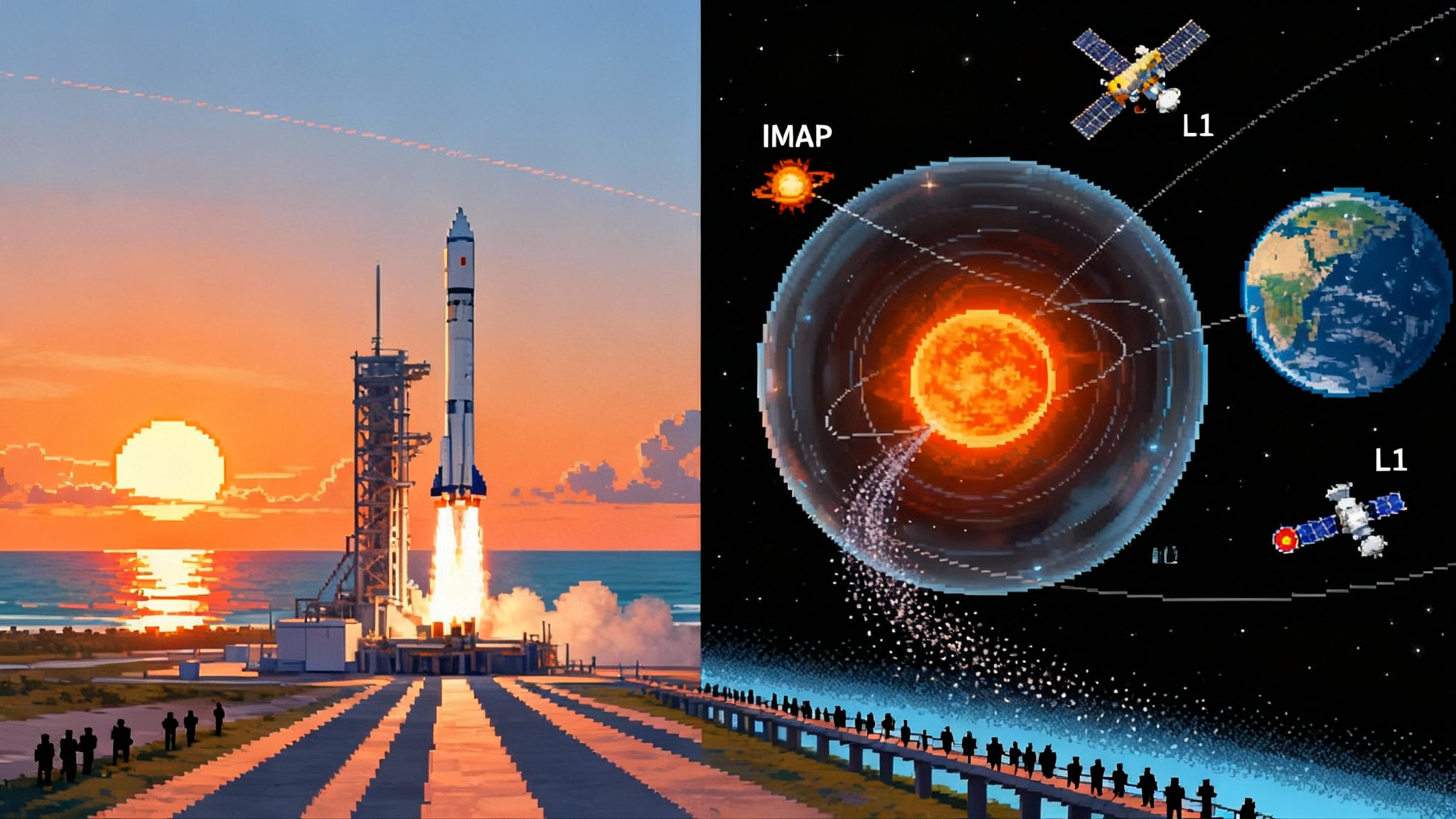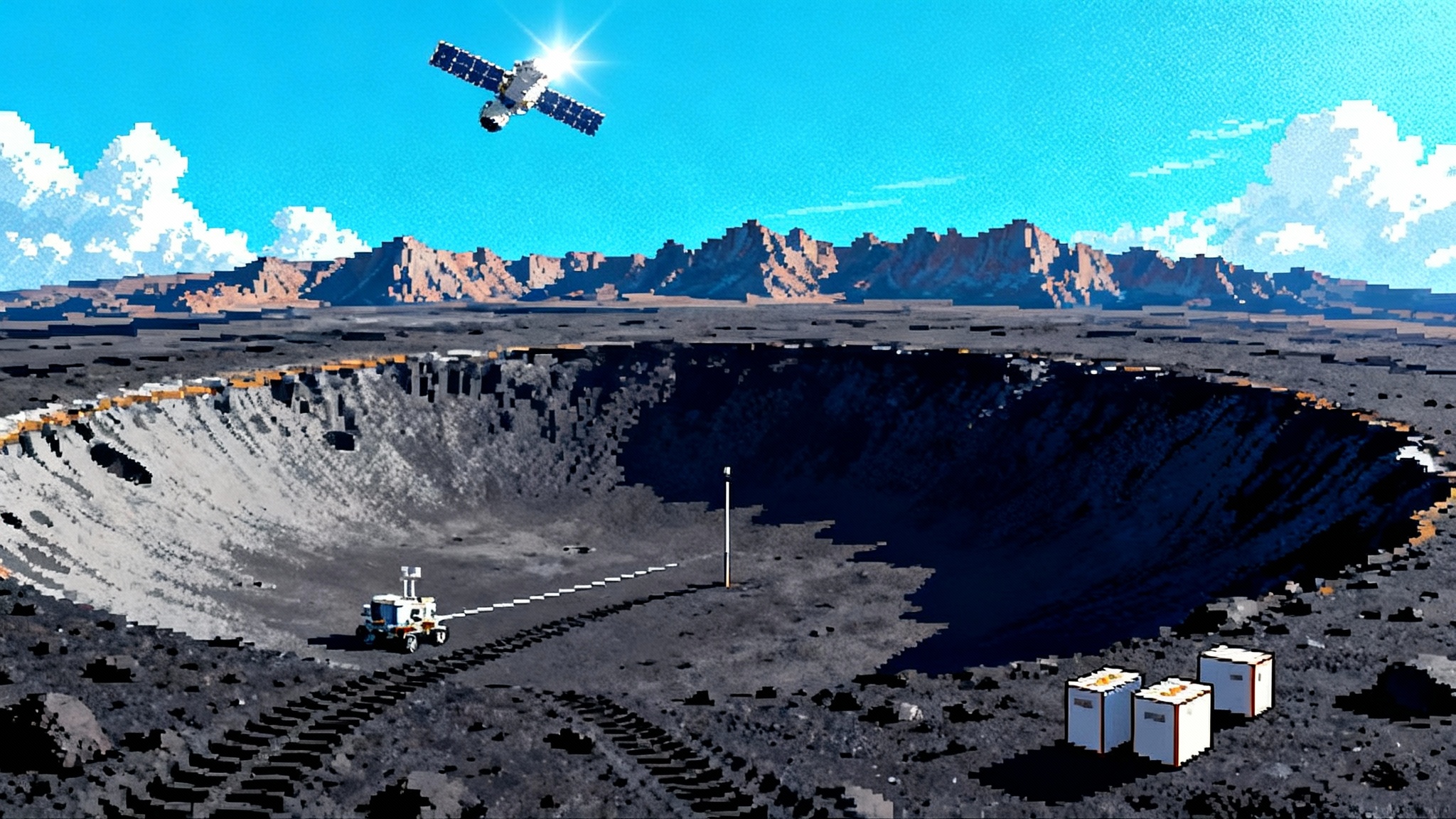Europe Turns On Eclipses: Proba-3’s Formation Telescope
ESA’s Proba-3 flies two small spacecraft as one precision instrument to manufacture hours-long solar eclipses on demand. The result is continuous, high-contrast views of the Sun’s inner corona and faster, sharper space‑weather nowcasts.
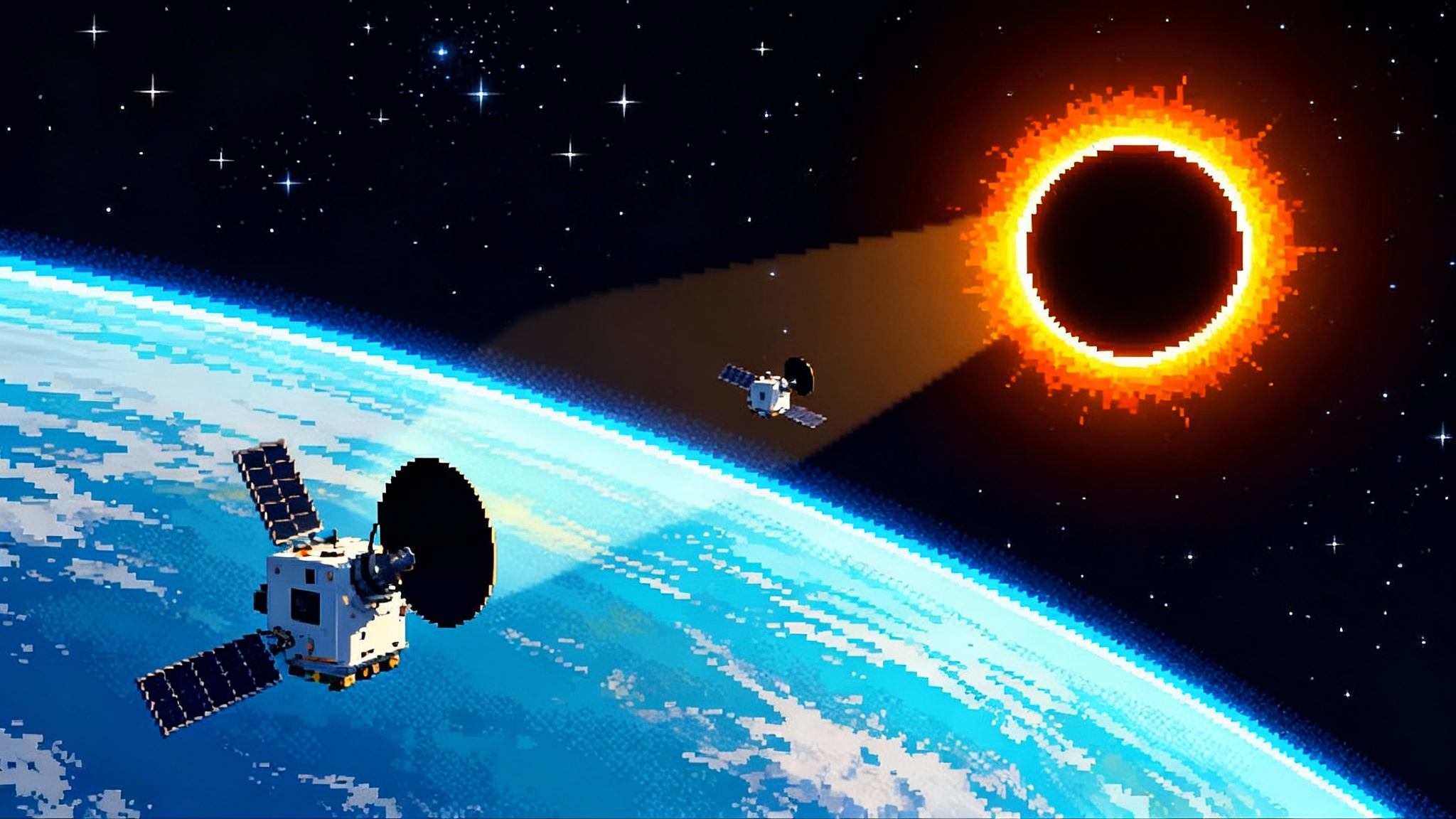
Breaking: Europe just made eclipses on demand
On June 16, 2025, the European Space Agency released the first images from a new kind of telescope that is not a single machine at all. Proba-3 is a pair of small satellites that fly as one, creating total solar eclipses on command so that a camera can see the Sun’s faint outer atmosphere, the inner corona. In testing this spring, the pair created their first artificial total eclipse and revealed the inner corona with remarkable clarity, a region that has been notoriously hard to observe from Earth or from standard space coronagraphs. The agency’s announcement was unambiguous about what this means: the era of formation-flying telescopes is no longer theory, it is working hardware in orbit. For the high-stakes details, see ESA’s account in Proba-3’s first artificial solar eclipse.
Proba-3’s trick is simple to describe and fiendishly hard to do. One spacecraft carries a 1.4 meter wide disk that acts like the Moon, blocking the blinding glare of the Sun. The other spacecraft carries a coronagraph called ASPIICS, a precision camera that can finally peer into the dim inner layers of the corona without being washed out. The two fly about 150 meters apart, and during alignment the occulter’s shadow has to land on a target only 8 centimeters across on the telescope spacecraft. When the geometry locks in, it is eclipse time, not for minutes but for hours.
How do you make a solar eclipse without the Moon?
Natural total eclipses are rare, brief, and geographically finicky. Proba-3 makes them repeatable. Think of two expert figure skaters holding a perfectly straight ribbon between them while gliding in sync. In space, the ribbon is an invisible line from the occulter disk to the telescope aperture. The satellites orbit together in an elongated loop around Earth, and once per orbit they turn that line toward the Sun so the occulter hides the bright disk from the camera. That alignment can last up to about six hours, and the orbit repeats roughly every 19.6 hours, giving scientists a dependable eclipse window every cycle.
The payoff is access to the inner corona, a narrow band right above the visible solar limb where the Sun’s magnetic field lines fan outward and the roots of the solar wind begin. Standard coronagraphs hide the Sun using an internal mask inside a single telescope. That design has to block a lot of glare, which forces a larger safety margin and leaves a blind zone close to the Sun. By flying the mask on a separate spacecraft, Proba-3 brings that blind zone dramatically closer to the solar edge. The result is continuous, repeatable images of structures that drive space weather.
Millimeter precision at 150 meters: the choreography that makes it work
At Proba-3’s heart is guidance and control that reads like a pilot’s dream checklist. The satellites maintain their relative positions to within roughly a millimeter during eclipse operations. To visualize that, imagine keeping two cars perfectly aligned on a straight road, separated by one and a half city blocks, while ensuring their front license plates stay within the thickness of a credit card. Now make both cars fly in free fall around the planet while pointing at a star. That is the level of finesse Proba-3 achieves.
The hardware that makes this possible is a layered stack of sensors and actuators. Coarse navigation kicks off with relative Global Positioning System measurements and star trackers. Then optical cameras take over with a visual-based system that spots alignment targets between the spacecraft. A dedicated laser metrology unit called the Fine Lateral and Longitudinal Sensor shoots a beam from the occulter spacecraft to a corner-cube reflector on the coronagraph spacecraft and reads the return to measure minute lateral and along-track offsets. Finally, a set of shadow sensors around the ASPIICS aperture confirms that the occulter’s 8 centimeter shadow is centered. When one side sees more light than the other, cold gas thrusters on the occulter fire gentle puffs at the 10 millinewton level to nudge things back on track. The whole dance runs autonomously, with a ground team watching and ready to step in.
If you want to go deeper on the sensor stack and how those final millimeters are closed, ESA’s technical overview breaks down the metrology suite and control logic in ESA overview of Proba-3 technologies.
What the first images show, and why that matters now
The first images released from Proba-3 focus on the inner corona, a wispy halo of magnetized plasma that is paradoxically much hotter than the Sun’s surface. This region hosts the seeds of coronal mass ejections and the structures that guide the solar wind. It is where small changes in magnetic topology can set up large eruptions that days later buffet Earth’s magnetosphere. Seeing the inner corona continuously for hours at a time is a big step forward for nowcasting, which is the practice of using real-time observations to provide warnings on the timescale of minutes to hours. As solar maximum ramps, complementary missions like IMAP live heliosphere map will benefit from tighter, earlier boundary conditions.
Until now, the best coronagraph views came from missions like SOHO and Solar Orbiter. They are invaluable, yet the inner few percent above the solar limb has always been hard to capture without the rare help of a total eclipse. Natural eclipses are wonderful but fleeting. Proba-3 makes that once-a-year window a near-daily routine, opening long, stable observing arcs during each orbit.
For operators who care about space weather, that is concrete value today. Satellite controllers get earlier and more reliable cues on whether an eruption is directed at Earth. Power grid managers gain a clearer read on whether a geomagnetic storm might couple into long transmission lines. Aviation planners can adjust polar routes to avoid radio blackouts. The difference between learning that an ejection is likely in the next few hours versus only recognizing it after the fact can be measured in avoided downtime and lower risk to hardware in orbit.
From forecasts to nowcasts: how Proba-3 data flows into models
Proba-3’s images do not exist in isolation. The mission is already feeding the European modeling pipeline that turns observations into actionable forecasts. ESA’s Virtual Space Weather Modelling Centre brings together coronal and heliospheric models that stitch the Sun-to-Earth chain into a single view. One of those models, known as COCONUT and developed at KU Leuven, helps simulate coronal structures that Proba-3 is imaging. When model predictions of streamers, loops, and coronal holes line up with what Proba-3 actually sees in visible light, confidence rises, and the whole system can update its estimates of the magnetic field and plasma flow that matter for Earth.
In practical terms, the new inner-corona imagery improves how models initialize the early shape and direction of a coronal mass ejection. That change propagates down the pipeline into better arrival-time and impact-strength estimates at Earth. Over time, a library of hundreds of long-duration eclipse sequences will also teach machine learning systems to recognize precursors and patterns that human forecasters miss, shortening the gap between eruption and alert.
A new template for telescopes that will not fit in one rocket
Proba-3 is a solar mission, but its real legacy may be architectural. Many of the most powerful telescopes scientists can imagine simply do not fit inside a single fairing, or even inside a single structure. Formation flying offers a way around that bottleneck.
- Starshades for exoplanet imaging: A free-flying occulting disk that suppresses starlight so a separate telescope can photograph Earth-like planets. Proba-3 is a working demonstration that you can keep a blocker and a camera in lockstep over long periods.
- Long-baseline observatories: Interferometers and sparse-aperture telescopes that treat multiple small spacecraft as one giant mirror. Millimeter-level control at tens to hundreds of meters is a stepping stone toward kilometer-scale baselines in the future.
- Agile, modular Earth observation: Swarms that can reconfigure their spacing to trade resolution for swath on the fly, or fly a radar transmitter and receiver on different spacecraft to synthesize wide apertures.
The same control logic, metrology, and micro-thrusting that hold Proba-3 together can be adapted to these missions. Because the method is modular, it unlocks upgrade paths that do not exist with monolithic spacecraft. You can swap in a sharper camera or a larger occulter disk on a future flight without replacing the rest of the system. This modularity echoes our look at next-gen mapping in Euclid opens the dark map.
Who built this flying eclipse machine
Proba-3 is a European team sport. Spain’s Sener leads the industrial consortium. Airbus Defence and Space in Spain designed the spacecraft platforms. GMV in Spain is responsible for formation flying guidance, navigation, control, and flight dynamics. Redwire Space in Belgium led spacecraft assembly, integration, and validation and hosts the cleanroom where the pair were tested facing each other nose to nose, the way they now fly in orbit. Spacebel in Belgium provided software and operations support. The ASPIICS coronagraph comes from the Centre Spatial de Liège in Belgium. Within the instrument team, OIP Sensor Systems contributed the focal plane assembly and AMOS developed optical hardware, including parts of the laser metrology head. On the science side, KU Leuven contributes modeling that helps turn images into insight.
The mission launched on December 5, 2024, on a PSLV-XL from India’s Satish Dhawan Space Centre, and it has been commissioning instruments and refining formation control through early 2025. The first artificial eclipses and first images mark the transition from proving the concept to using it for science and forecasting.
Numbers worth remembering
- Separation during eclipse: about 150 meters. That is roughly one and a half football fields.
- Relative positioning during operations: on the order of one millimeter. Picture a pencil tip alignment error over that distance.
- Occulter diameter: about 1.4 meters. The shadow at the telescope: about 8 centimeters across.
- Eclipse duration: up to roughly six hours per orbit. Orbital period: about 19.6 hours.
- Instrument aperture: about 5 centimeters for ASPIICS, tuned to capture the faint corona in visible light.
These are not just specs. Together they describe a machine that trades mass and stiffness for software and sensing. Instead of building a single massive tube to keep the occulter and the optics in perfect relative alignment, Proba-3 keeps two free-flying spacecraft aligned with continuous measurement and tiny corrective thrusts. That is why the concept scales.
What changes this year and next
- Space-weather services get richer source data: Expect more accurate early estimates of the shape and direction of eruptions. Forecasters can move from daily snapshots to multiple hours of continuous viewing of the inner corona every orbit.
- Operations teams adjust playbooks: Satellite operators can schedule safe modes and momentum dumps with better timing. Grid operators and aviation planners can refine thresholds for alerts and reroutes because they will see the triggers earlier and more clearly.
- The research community starts building a long baseline of inner-corona dynamics: With many artificial eclipses per month, researchers will accumulate a time series that captures how structures evolve from quiet Sun to eruption. That archive may be the key to cracking why the corona runs so much hotter than the surface.
- Formation flying moves from demo to design option: Mission teams sketching new telescopes in the late 2020s can plan around multi-satellite layouts with fewer unknowns. The Proba-3 playbook shows how to design the metrology chain, control loops, and operations. Formation-flying lessons will intersect with distributed observing ideas described in 3I ATLAS shared observatory.
The bigger picture: from a headline to a habit
The Proba-3 breakthrough lands in the middle of a solar maximum that has already reminded everyone how much modern life depends on space weather. The mission takes what used to be a calendar event that reporters circled in red and turns it into a habit. If you can count on an eclipse window every orbit, you can build services and science around it. That moves the field from lucky snapshots to sustained understanding.
There is also a cultural shift hidden inside the engineering. For decades, big leaps in observation have come from bigger single machines. Proba-3 shows another way. Break the machine into parts. Put each part on its own platform. Replace structure with sensing. Trade rigidity for computation. Then let software hold the system together. That is how you build instruments that are larger than any one rocket can carry.
What to watch next
- Longer, cleaner eclipse sequences as the team tunes control gains and image processing. Expect fewer interruptions and deeper views into the inner corona.
- Tighter integration with models. As pipelines ingest more Proba-3 imagery, watch for improvements in arrival-time forecasts for coronal mass ejections.
- Early proposals that reuse the architecture. Exoplanet teams, Earth observation groups, and astrophysics consortia will look at Proba-3 and see a path to hardware they can fly within a few years.
- A steady cadence. Once operations settle, the most impressive headline may be no headline at all, just the routine of artificial eclipses turning into data products and practical alerts.
The bottom line
Proba-3 does not just make pretty pictures of the Sun. It manufactures time. By turning rare celestial minutes into hours-long windows every orbit, it changes what solar physics and space-weather services can do today. And by proving that millimeter-precision formation flying works at about 150 meters with autonomous control, it sketches the blueprint for tomorrow’s distributed observatories. Artificial eclipses on demand are a scientific feat. They are also a new way to think about building telescopes in space. That is why this breakthrough matters.
